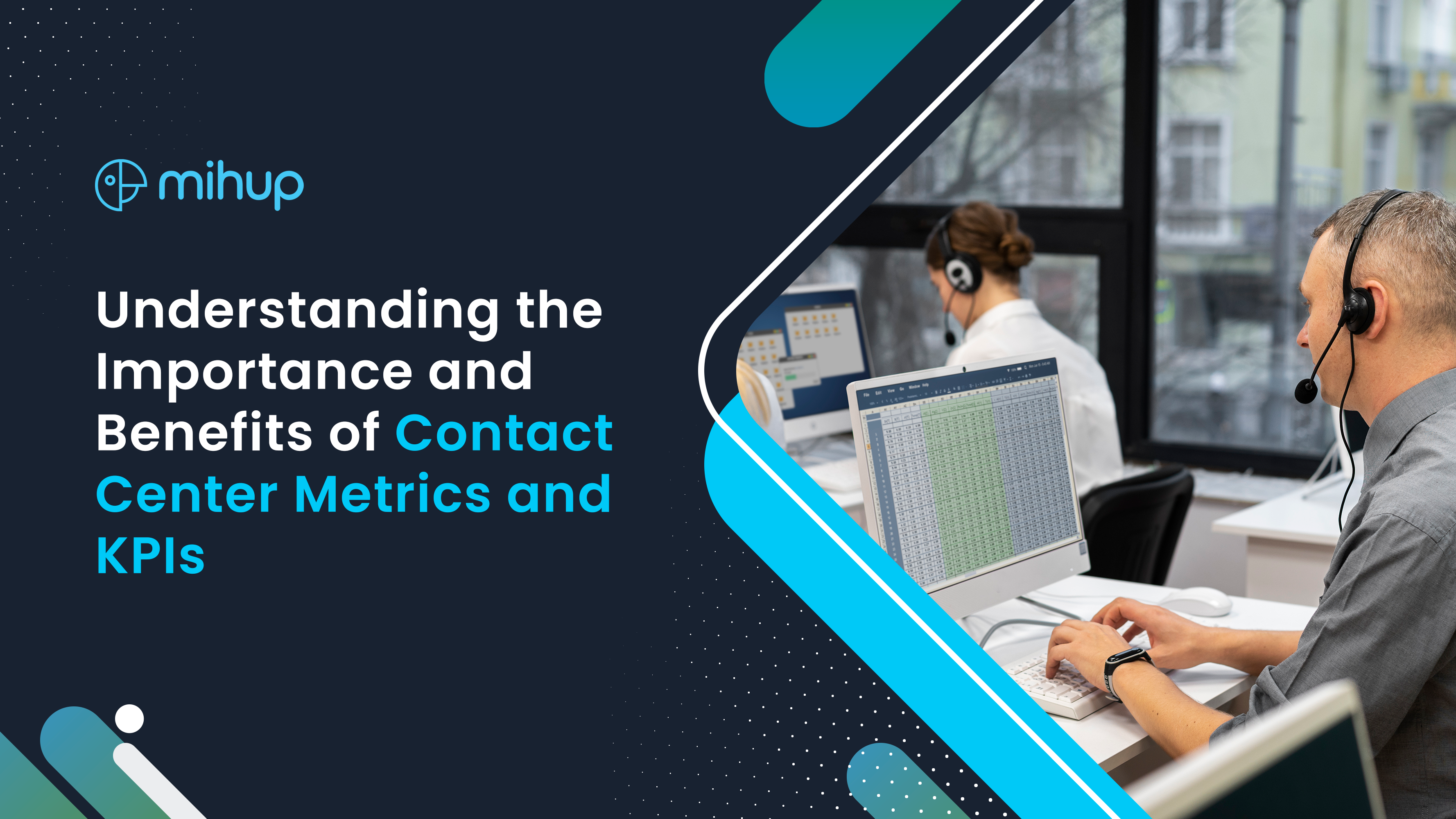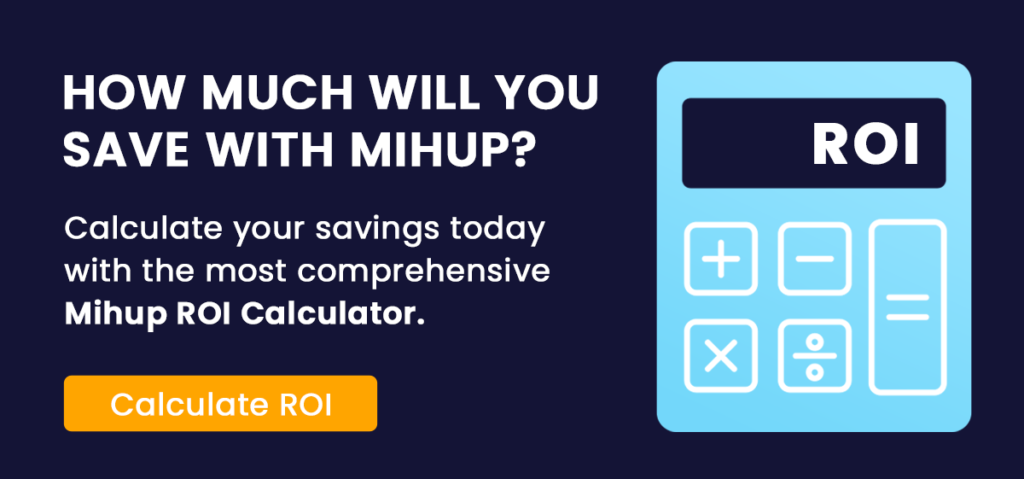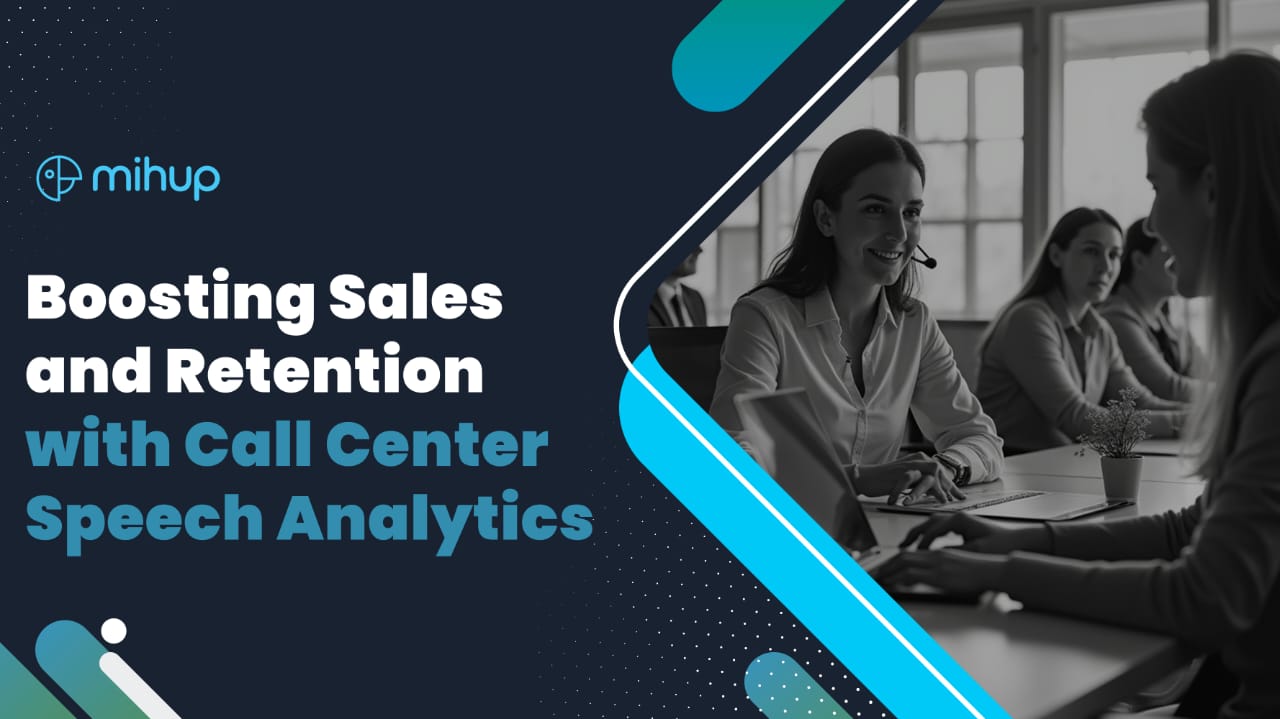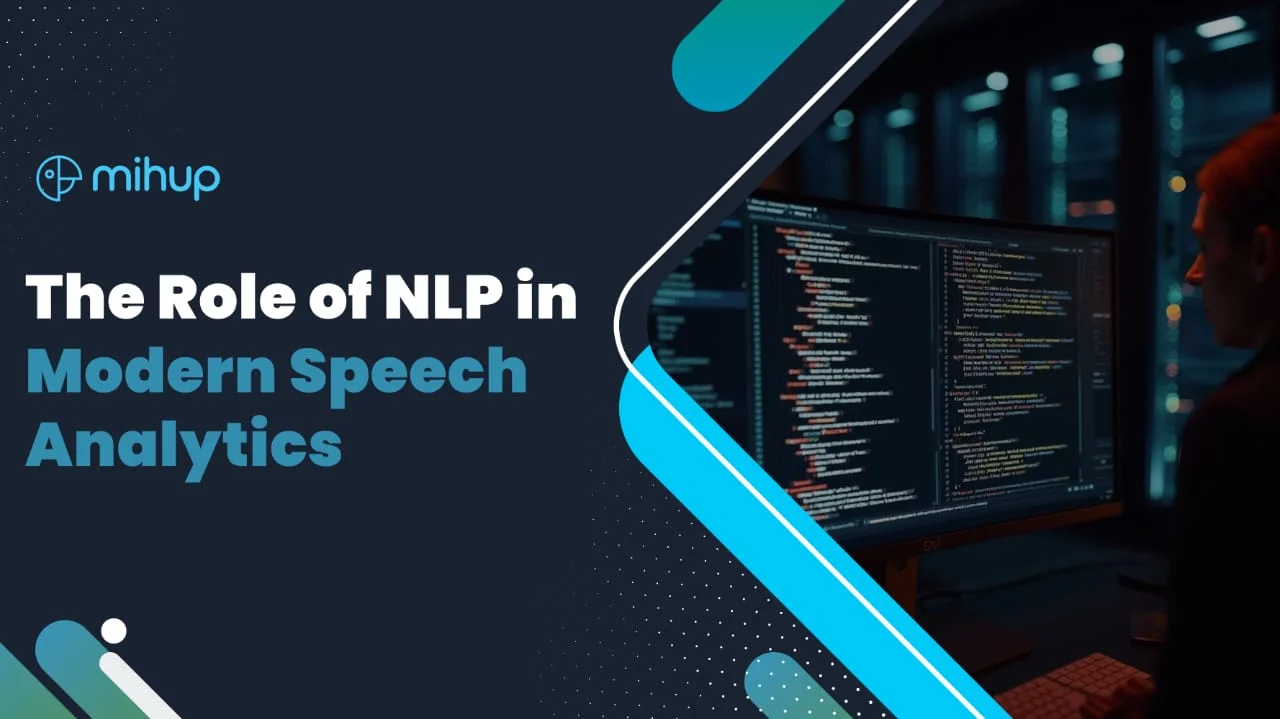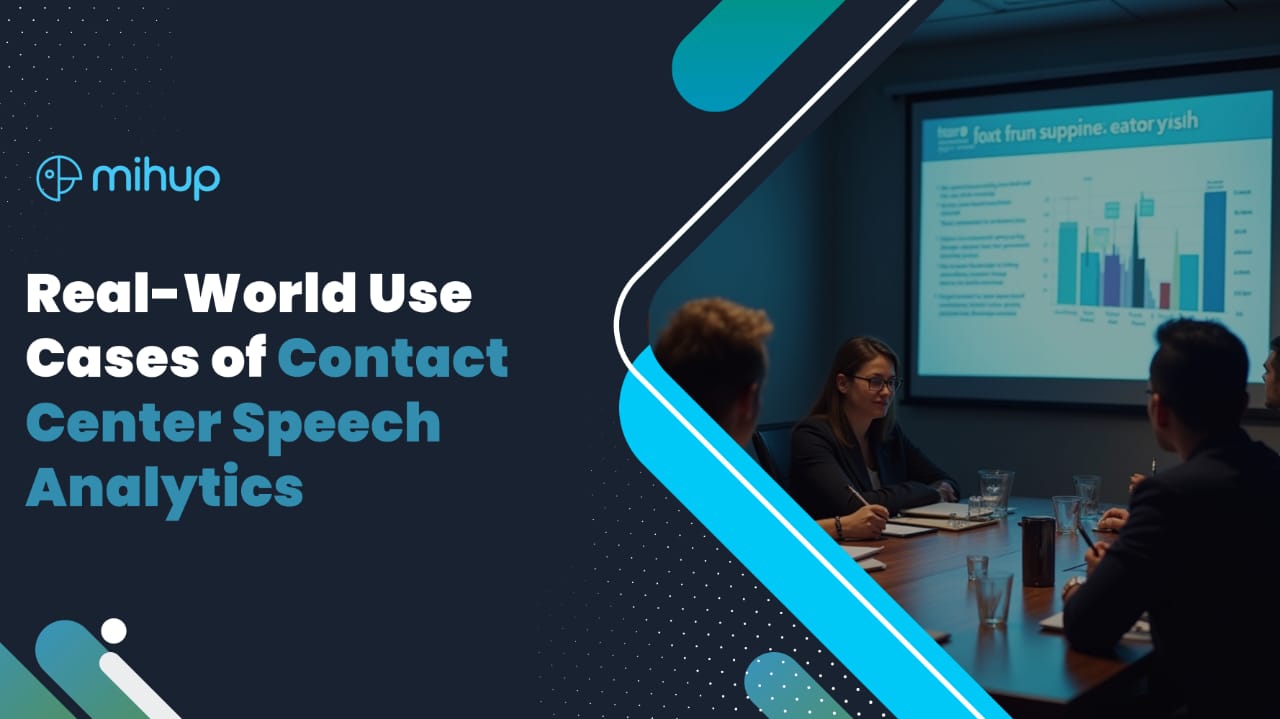Contact Center key performance indicators (KPIs) and agent performance metrics play a vital role in assessing the efficiency and effectiveness of Contact Center agents. These metrics serve as essential tools that not only measure agents’ productivity but also unveil potential areas for enhancement through the use of Real-time Agent-Assist.
By closely monitoring KPIs and performance metrics, Contact Center managers can gain valuable insights into agent performance, identify strengths and weaknesses, and implement targeted strategies to optimize operations.
How is Contact Center efficiency measured?
Measuring the efficiency and performance of a Contact Center relies heavily on Contact Center metrics and KPIs ranging from overall customer satisfaction to the individual performance of Contact Center agents. They play a crucial role in identifying areas that require improvement, both at the macro level of the business and the micro level of individual agents.
A diverse range of sources provides data for Contact Center KPIs. Customer satisfaction surveys offer valuable insights into how customers perceive the service they receive. Additionally, call diagnostics such as AHT and average wait time to contribute to the collection of KPI data.
Often, the impact of one KPI can affect another, such as long wait times negatively influencing customer satisfaction scores. Consequently, accurate analysis of KPIs is vital for comprehending Contact Center metrics. This is why an increasing number of contact centers are turning to AI and automation to obtain data-rich insights necessary for optimizing their operations.
Most important Contact Center metrics and KPIs
The Contact Center performance metrics that hold the greatest significance are the ones that directly influence customer lifetime value (CLV) and, as a result, revenue. CLV represents the overall revenue expected from a customer over the course of their relationship with a business. When assessing CLV from a Contact Center standpoint, it becomes apparent that the factors affecting it are closely linked to the customer experience. These factors encompass convenience, ease, understanding, empathy, as well as consideration for customers’ time and patience. Contact Center KPIs that measure these elements include:
Customer service KPIs
Customer service KPIs measure how well a contact center performs as a whole. These metrics look at center-wide averages across a range of indicators:
Customer satisfaction score
CSAT quantifies the level of contentment customers experience with a company, its products, or services. Contact centers commonly utilize customer satisfaction surveys and feedback mechanisms to assess CSAT. It serves as a benchmark for evaluating how well a company’s offerings and customer service align with, surpass, or lag behind customer expectations.
Call abandonment rate
The call abandonment rate signifies the portion of incoming customer service calls in which callers disconnect before reaching a live agent. Several factors impact this rate, including the speed of connecting to an agent and the level of customer dissatisfaction with the product or service they contacted the Contact Center for.
Average wait time
Average wait time (AWT), or average speed of answer (ASA), represents the length of time inbound callers spend in a queue before their call is answered. The commonly accepted industry benchmark for AWT is answering 80% of calls within 20 seconds. Decreasing wait times contributes to reducing call abandonment rates and enhancing overall customer satisfaction.
Peak hour traffic
PHT measures the performance of a contact center during the busiest periods of the day when call volumes are at their highest. PHT is a vital KPI that ensures sufficient staff available to manage surges in daily call volume. AI and automation play a role in optimizing PHT by diverting low-value calls to self-service options and supporting agents during intricate live interactions.
Agent productivity KPIs
Agent productivity KPIs, also called agent performance metrics, measure how individual contact center agents perform in several key areas, including (but not limited to):
First contact resolution
First contact resolution (FCR), also known as first call resolution, refers to a Contact Center resolving an issue for a customer on the first call. Factors that impact FCR include the complexity of the customer request, agent access to relevant information, and knowledge of appropriate next-best actions. Contact centers with high FCR rates see higher customer satisfaction (CSAT) scores and lower customer churn.
First response time
First response time (FRT) is a Contact Center KPI that measures how long it takes an individual agent to respond to a customer once they’ve entered the call queue. A high FRT is often a symptom of a problematic process: too many manual administrative tasks, a cumbersome knowledge management system, and/or excessive after-call work.
Average handle time
An agent’s average handle time (AHT) is the average amount of time it takes for a call to be completed. AHT consists of the duration of the call, from the moment an agent picks up the call to the final tone. This time is spent discovering what customers need, performing any requisite on-call tasks, and resolving or answering their queries. Agents often must balance reducing average handle time and ensuring customers feel listened to and supported for the entirety of their call.
Average call transfer rate
The average call transfer rate (or just transfer rate) is the mean number of calls an agent ends up transferring to another agent or department. Because transfers prolong a call (and may require customers to repeat information to multiple parties), high call transfer rates can negatively impact customer satisfaction.
Financial (business) KPIs
Financial (business) key performance indicators (KPIs) play a crucial role in evaluating the financial well-being of customer service providers alongside Contact Center performance metrics. These financial KPIs encompass:
Cost per contact
It measures the average expense incurred by a contact center to handle a single call. To calculate this, divide the total cost (operating expenses + capital expenses) by the number of contacts (calls handled – calls abandoned) within a specific timeframe. As per CX Today, the acceptable cost per call, covering direct labor, indirect labor, and operational expenses, ranges from INR200 to INR500.
Service level agreement (SLA)
It refers to a written contract that outlines the customer service standards between a contact center and its client(s). SLAs often establish Contact Center KPI expectations and acceptable performance metrics. For example, a healthcare provider may require the contact center to answer 80% of patient calls within 20 seconds.
Agent attrition rate
This represents the average percentage of Contact Center agents who leave their positions during a given period. High attrition rates, often around 30-40%, have been a persistent challenge in Contact Centers. Causes include increasing call complexity, inadequate training and coaching, outdated tools, and workplace stress.
Agent utilization rate
It measures the productivity ratio of Contact Center agents, evaluating the time they spend answering calls and performing related tasks divided by their capacity. A low utilization rate suggests process inefficiencies or obstacles, highlighting the need to optimize agent performance.
Call volume trends
These trends provide valuable insights into the type and frequency of incoming calls received by a contact center. Analyzing call volume trends enables contact centers to identify areas where additional support and tools, such as conversational AI and automation, can enhance agent performance, operational efficiency, and customer experience.
How conversational service automation works
During the call, as the interaction unfolds between the customer and the agent, the recorded audio is transferred to the transcription engine to convert speech into text. The resulting transcript is then passed through an NLP (Natural Language Processing) layer to extract pertinent information. Subsequently, the system autonomously generates a summary of the call.
With Mihup Agent Assist, your agents can now discover customer needs faster, offer personalized solutions, and cross-sell and upsell the right solution at the right time. Keep your agents productive and simplify their tasks with Mihup Agent Assist. Transform agent performance by assisting agents with real-time cues to meet their KPIs, and increase sales and customer retention.
Contact Center metrics and key performance indicators (KPIs) are crucial for the continuous well-being, sustainability, and competitive edge of contact centers. These KPIs serve the purpose of not only identifying obstacles and inefficiencies in performance and processes but also evaluating the effectiveness of implemented solutions in addressing those challenges. By integrating agent desktops and automating note-taking and call summarization, the insurer successfully eliminated these and other friction points, leading to heightened efficiency, as demonstrated by the post-solution metrics.
